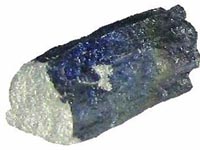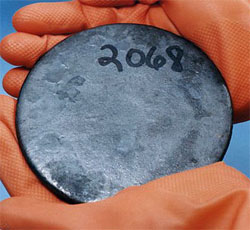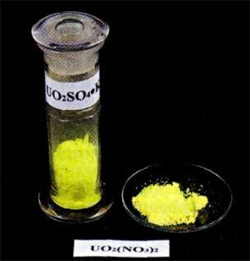Manganese

Manganese - wonder is a chemical chameleon: a large number of substances, in which Manganese shows all the intermediate degrees of oxidation from 0 to +7. And the color of these compounds is a rich palette: manganese salts(P) - delicate pale pink color, manganese compounds (III), brown or cherry, manganese (IV) - black or brown, manganese (V) - bright blue, manganese (VI) is green, and manganese (VII) - crimson.
Manganese is a hard, brittle, refractory metal (melting point=1245 0C). On the air it is oxidized, covered with a dark patina of oxide. Get manganese from Mn2O3 useing the aluminum oxide, which is formed during the calcination of pyrolusite:
Manganese dioxide 4MnO2 at 550 0C decomposes into 2m2O3 and oxygen O2, and Mn2O3+2Al →2MP+Al2O3. The hydroxide of manganese(II) Mn(OH)2, precipitates in the form of sediment with the action of alkali on the salts of manganese (II), exhibits all the properties of bases. In addition, it quickly oxidises in air, becoming ultimately in the hydrated oxide of manganese.
Uranium metal

The metal uranium - silvery metal, refractory. From all members of the family of actinides greatest practical importance is the metal. One time, at the dawn of nuclear research, the twentieth century was even called the century of uranium.
In appearance uranium metal like steel: it is easy to forging, polishing, rolling, refractory (melting point=1130 0C). Uranium - a bad conductor of heat and electricity: the thermal conductivity is 13 times less than thermal conductivity of copper.

Uranium is freely soluble in nitric acid with the formation of a yellow solution of uranium nitrate (nitrate dioxolane) UO2(NO3)2, in which uranium has highest oxidation state +6. This substance can also be got with dissolving in acid oxide of uranium (VI).
Light yellow hydroxide uranyl UO2(OH)7, sometimes called uranium acid exhibits properties of an amphoteric compound. With dissolving it in acids formed salts of uranium: UO2(OH)2+2HCl > UO2Cl2+2H2Oh, and by the action of alkalis are obtained uranate - salts of uranium acid:
2UO2(NO3)2 + 6NH3*H2O → (NH4)2U2O7+3H2O+4NH4NO3
Uranium in the earth's crust contains large quantities of (4%), more than cadmium, silver, mercury and bismuth. The simplest mineral is uraninite UO2+x. Is uranium dioxide subjected to partial oxidation with air oxygen or oxygen evolved as the result of a restructuring of the oxide UO2, the radioactive transformation of uranium metal in the metal lead: the resulting lead oxide PbO is formed, and excess oxygen is released in a free form, oxidizes uranium. Uranium ore is considered rich, if it contains from 0.5 to 1% uranium. Plants processing uranium ore uraninite is enriched, and then separate the uranium from impurities and is isolated in the form of oxide UO2.
To get uranium metal dioxide convert to uranium tetrafluoride:
UO2+4HF > UF4+2H2O and then restore with metall: UF4+2Mg → t0U+2MgF2
Nuclear fuel
Natural uranium is a mixture of three isotopes: 235U (0,72%), 238U (99,274%) and 234U (0,006%). Nuclear fuel, it is mainly enriched isotope uranium 235U. This isotope is required for the needs of nuclear engineering